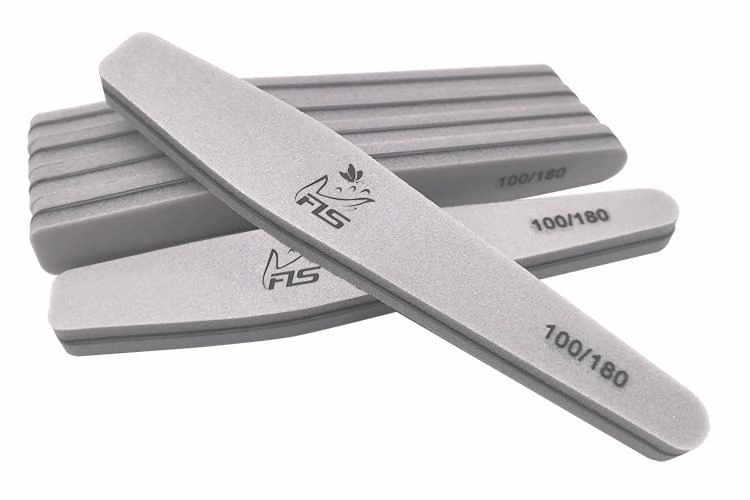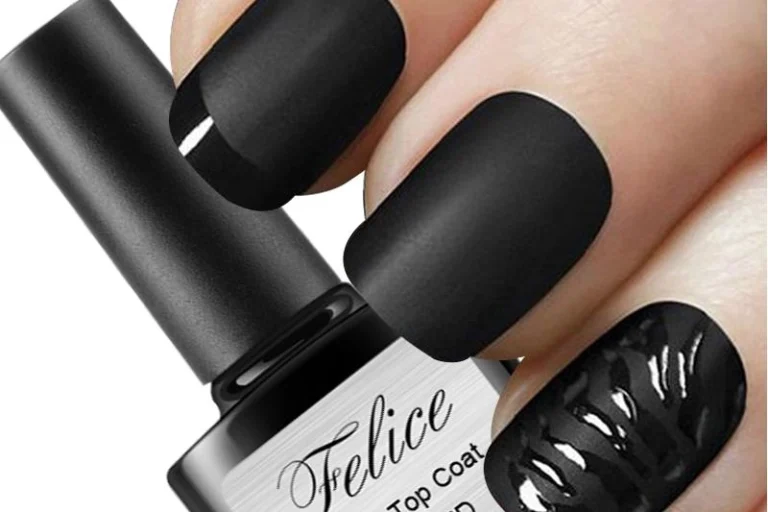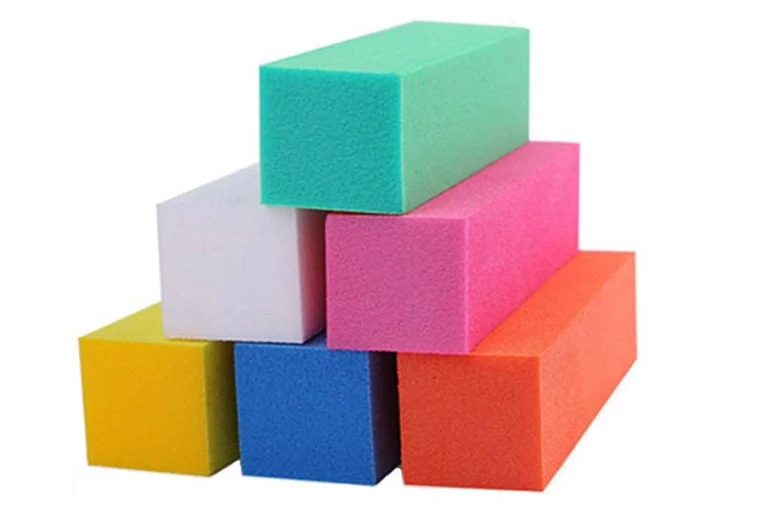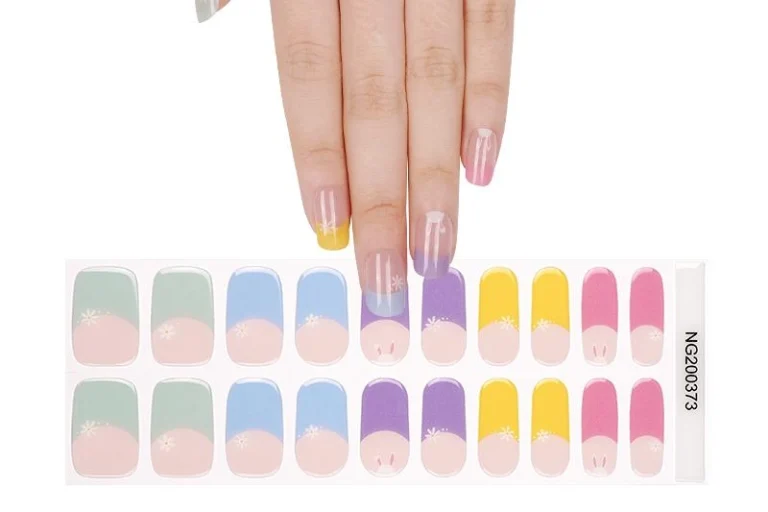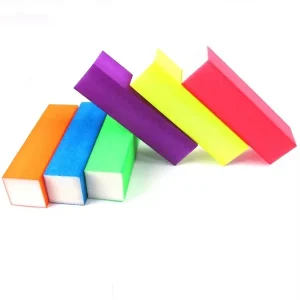
The nail buffer block is an essential tool within the beauty industry, specifically designed to enhance the appearance and health of nails. This simple yet effective tool has a long-standing history and a variety of functions that cater to both manicures and natural nail care. For anyone in the beauty field, understanding the nail buffer block’s origin and essential uses is crucial for delivering high-quality nail services.
Understanding the Nail Buffer Block
The Concept behind Nail Buffers
Nail buffers are designed to improve the surface of nails, creating a smooth and shiny finish. The primary concept of a nail buffer block lies in its ability to gently abrasively polish the nail surface without causing damage. By using varying degrees of abrasiveness, it can refine the texture of both natural and artificial nails. Buffers eliminate ridges and imperfections, leaving the nails looking polished and healthy. This process not only enhances aesthetics but also promotes better adherence for nail polish and other treatments.
Evolution in Nail Care Tools
Over the years, nail care tools have evolved significantly, with the nail buffer block being a quintessential component of this transformation. Early tools were often rudimentary, lacking the finesse that modern buffers offer. As the beauty industry expanded, the demand for better nail care led to innovations in design, material selection, and manufacturing processes for nail buffer blocks. They transitioned from basic wooden files to more sophisticated foam and sandpaper composites that are now commonplace in salons and homes alike.
Introduction to Felice’s Nail Buffer Block
Felice’s nail buffer block embodies the evolution of nail care tools with its high-quality construction and ergonomic design. Designed specifically to meet the needs of both professionals and at-home users, Felice’s nail buffer block enhances the nail care experience. It is user-friendly and effective, with features that ensure durability and consistent results. This product highlights Felice’s commitment to creating exceptional beauty tools that cater to modern-day requirements.
Historical Background of Nail Buffer Blocks
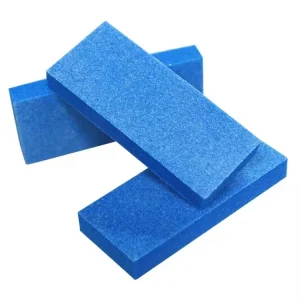
Early Innovations in Manicure Tools
Manicure tools have roots that date back centuries, with early civilizations utilizing various materials to care for their nails. Ancient Egyptians, for instance, used stones and powders to buff their nails before applying color. Over time, as beauty standards evolved, so did the tools, leading to the first iterations of the nail buffer blocks that we know today. These early innovations laid the groundwork for modern nail care techniques and products.
How Nail Buffers Became Popular
The popularity of nail buffers surged in the late 20th century as nail care became mainstream. Increased access to beauty products and a rise in self-care culture contributed to this trend. Salons began to offer buffing as a standard service, and consumers began to seek out nail buffer blocks for at-home use. Educational resources, including tutorials and nail care blogs, further promoted the use of nail buffers, highlighting their importance in achieving healthy and aesthetically pleasing nails.
Contributions of Different Cultures
Various cultures have significantly contributed to the development of nail buffer blocks throughout history. For example, the Japanese are known for their meticulous nail care practices, which include the use of unique polishing techniques and products. Similarly, Western beauty standards have influenced the design and use of nail buffers, leading to an amalgamation of techniques that enrich the global nail care landscape. This fusion of ideas has helped refine the nail buffing process, making it an integral part of modern manicures.
Key Features of a Nail Buffer Block
Composition and Materials Used
The composition of nail buffer blocks varies widely, typically constructed from foam, rubber, or wood covered in fine and coarse abrasives. These materials ensure effective buffing while providing a comfortable grip during use. The choice of materials is essential for durability and performance, as quality buffers can last through multiple uses without degrading. Felice’s nail buffer block is made from premium materials that guarantee longevity and efficiency, supporting a professional-grade finish at home.
Different Grades of Abrasiveness
Nail buffer blocks often come in different grades of abrasiveness, allowing users to choose the appropriate level based on their nail type and desired results. Coarse surfaces are suitable for filing down uneven areas, while finer surfaces provide a smooth, glossy finish. Understanding the differences in abrasiveness helps users achieve tailor-made results, whether prepping for a manicure or maintaining their natural nails. Felice offers a variety of options, ensuring the perfect match for any nail care routine.
Size and Design Considerations
The size and design of a nail buffer block significantly impact its usability. A well-designed buffer is typically lightweight, easy to handle, and ergonomically shaped to ensure comfort during use. Size often varies depending on the purpose, whether for professional salon use or personal at-home care. Felice’s nail buffer block showcases thoughtful design elements that not only enhance function but also elevate the overall user experience.
Unique Features of Felice’s Products
Felice’s nail buffer block stands out due to its unique features that combine quality with innovation. These buffers are designed to be user-friendly, ensuring that even beginners can achieve salon-quality results with ease. Moreover, Felice prioritizes eco-friendly practices in the production of their nail tools, making them a responsible choice for conscious consumers. With a focus on design, durability, and performance, Felice continues to redefine the nail care experience.
Benefits of Using a Nail Buffer Block
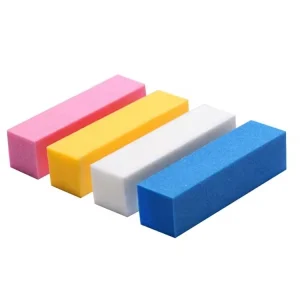
Health Benefits for Your Nails
Promoting Natural Shine
Utilizing a nail buffer block is essential for promoting the natural shine of nails. By gently buffing the nail surface, the buffer smooths out any imperfections and ridges that may dull the nail’s appearance, resulting in a glossy finish. This shine is achieved through a delicate polishing process that enhances the nails without the need for nail polish or additional treatments. Regular use of a nail buffer block fosters healthier nails, allowing them to appear radiant and well-cared for, which is especially beneficial for those who prefer a more natural look.
Minimizing Damage
A critical advantage of using a nail buffer block is its ability to minimize damage to the nails. Unlike traditional filing techniques that can create splits and weaken the nail, a gentle buffing action actively reduces the risk of chipping and breaking. The varied levels of abrasiveness available in buffer blocks allow for targeted and controlled use, making it safer for delicate nails. When used correctly, the nail buffer block not only maintains the integrity of the nails but also encourages the growth of stronger and healthier nails over time.
Achieving Professional-Looking Results at Home
Step-by-Step Usage Guide
To achieve salon-quality nail results at home, a systematic approach to using a nail buffer block is essential. Begin by filing and shaping the nails to your desired length and shape, utilizing the coarser side of the buffer. Following this, move on to the buffing process, where the focus shifts to eliminating any ridges and creating a smooth surface. Finally, the polishing and finishing touch is applied with the finest side of the buffer, which delivers that professional shine. With consistency and the right techniques, anyone can attain polished and salon-ready nails in the comfort of their own home.
Filing and Shaping Nails
The first step in the nail buffing process involves filing and shaping the nails. A proper nail file helps reduce the length and creates the desired nail shape, be it square, oval, or rounded. Working in one direction rather than a back-and-forth motion can help prevent damage to the nails and avoid splitting. This structured approach sets the stage for an effective buffing experience, ensuring that nails are well-prepped before moving on to the next stages.
Buffing Process
Once the nails are shaped, moving to the buffing process is crucial. This phase involves using the nail buffer block to gently polish the nail surface. By applying slight pressure and moving in smooth strokes, the buffer effectively removes any rough patches or imperfections. The result is a more uniform texture that not only looks great but also enhances the adhesion of any polish or treatment applied afterward. This simple yet impactful step is integral in achieving the coveted professional appearance.
Polishing and Finishing Touch
Completing the buffing routine, the polishing and finishing touch finalizes the look of your nails. Using the finest side of the nail buffer block, go over the entire surface of each nail, applying light pressure to achieve a glossy shine. This step ensures that any remaining minor imperfections are smoothed out, allowing the natural sheen of the nails to emerge. Investing a few extra minutes for this finishing touch can significantly elevate the overall appearance of the nails, giving them a well-groomed and elegant finish.
Diverse Applications Beyond Traditional Use
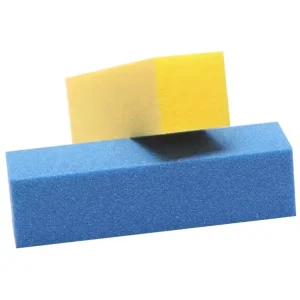
Prepping Nails for Polish or Gel Applications
A versatile use of the nail buffer block lies in its role as a prep tool for polish or gel applications. By smoothing out the nail surface and ensuring it is clean and free of oil or debris, the buffer enhances the adherence of nail products. This preparation not only improves the durability of the polish or gel but also prevents lifting and chipping, ultimately extending the life of your manicure. Utilizing a nail buffer block during preparation ensures that the finished application will achieve the desired aesthetic and longevity.
Maintenance of Artificial Nails
In addition to natural nail care, the nail buffer block serves a vital role in the maintenance of artificial nails. Regular buffing can help smooth out the surface of acrylic or gel nails, eliminating any scratches and restoring a polished look. This practice also allows for better adherence of polish or top coats, ensuring that the artificial nails maintain their desired appearance. Moreover, buffering can assist in blending the edges where the artificial nail meets the natural nail, creating a seamless transition that enhances the overall look.
Gentle Exfoliation for Hands and Feet
Beyond nail care, the nail buffer block can be effectively used for gentle exfoliation of the hands and feet. The finer sides of the buffer are adept at sloughing away dead skin cells, leading to smoother and softer skin. This dual-purpose use extends the benefits of the buffer beyond just aesthetics, promoting overall hand and foot health. Incorporating this practice into a regular beauty routine can improve the texture of the skin, making it look fresher and revitalized while complementing the healthier appearance of well-maintained nails.
In conclusion, the nail buffer block has evolved from its historical roots into an indispensable tool in contemporary beauty practice. By understanding its benefits, functions, and innovative uses, one can fully appreciate the contribution of the nail buffer block to achieving beautiful and healthy nails. With brands like Felice offering high-quality nail buffer blocks, individuals can easily integrate professional nail care techniques into their daily routines.
Choosing the Right Nail Buffer Block
Factors to Consider When Choosing a Product
Personal Preferences
When selecting a nail buffer block, personal preferences play a significant role in the decision-making process. Individuals should take into account their comfort level with various designs and materials. Some may prefer a softer feel of foam buffers, while others might favor the sturdiness of wooden designs. Color and aesthetics can also influence choices, as many beauty enthusiasts appreciate tools that align with their personal style, making the nail care routine feel more enjoyable.
Specific Needs for Different Types of Nails
Different types of nails require specific care and attention, which influences the choice of a nail buffer block. For example, those with naturally soft or thin nails should opt for a buffer block with a gentler abrasive side to minimize potential damage and promote healthy growth, like high elastic sponge buffer. Conversely, individuals with thicker or more resilient nails may benefit from a stronger abrasiveness to effectively smooth out and refine nail surfaces. Understanding one’s own nail characteristics establishes a basis for selecting the ideal buffer block suited for individual needs.
Why Felice’s Nail Buffer Blocks Stand Out
Felice’s nail buffer blocks distinguish themselves through their commitment to quality, functionality, and user experience. Each buffer is crafted with premium materials known for their durability, ensuring they can withstand repeated use without degrading. The well-thought-out design enhances user comfort, allowing for easy handling during the buffing process. Furthermore, Felice emphasizes eco-friendliness in their product production, making them not only a practical choice for consumers but also a responsible one for the environment. With these combined elements, Felice’s nail buffer blocks are positioned to meet the high standards of both professional and at-home nail care enthusiasts.
Caring for Your Nail Buffer Block
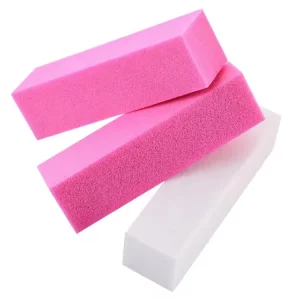
Best Practices for Cleaning and Maintenance
Proper cleaning and maintenance of a nail buffer block are essential to ensure longevity and effectiveness. After each use, it is advisable to gently wipe the buffer surfaces with a clean, dry cloth to remove any residue, dust, or nail debris. If needed, a mild soap solution can be used for deeper cleaning, taking care to avoid soaking the buffer, as excessive moisture can undermine its structural integrity. Regularly maintaining the buffer not only enhances performance but also promotes a hygienic nail care routine.
When to Replace Your Buffer Block
Over time, wear and tear on a nail buffer block can diminish its effectiveness, signaling when it may be necessary to replace it. Signs of degradation can include visible fraying, loss of abrasiveness, or uneven surfaces that fail to provide a smooth finish. Regular assessments of the buffer’s condition will help users determine when it has reached the end of its viable life. For those who frequently use their nail buffer blocks, keeping an eye on its performance will ensure that they continue to achieve the desired results without compromising nail health.

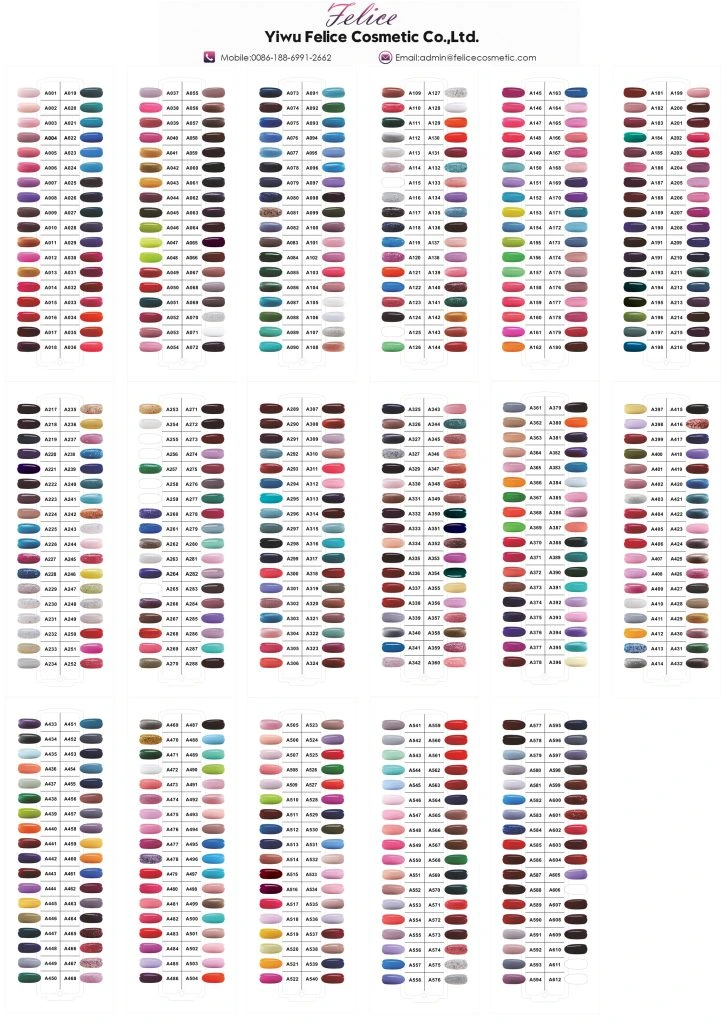
.webp)
